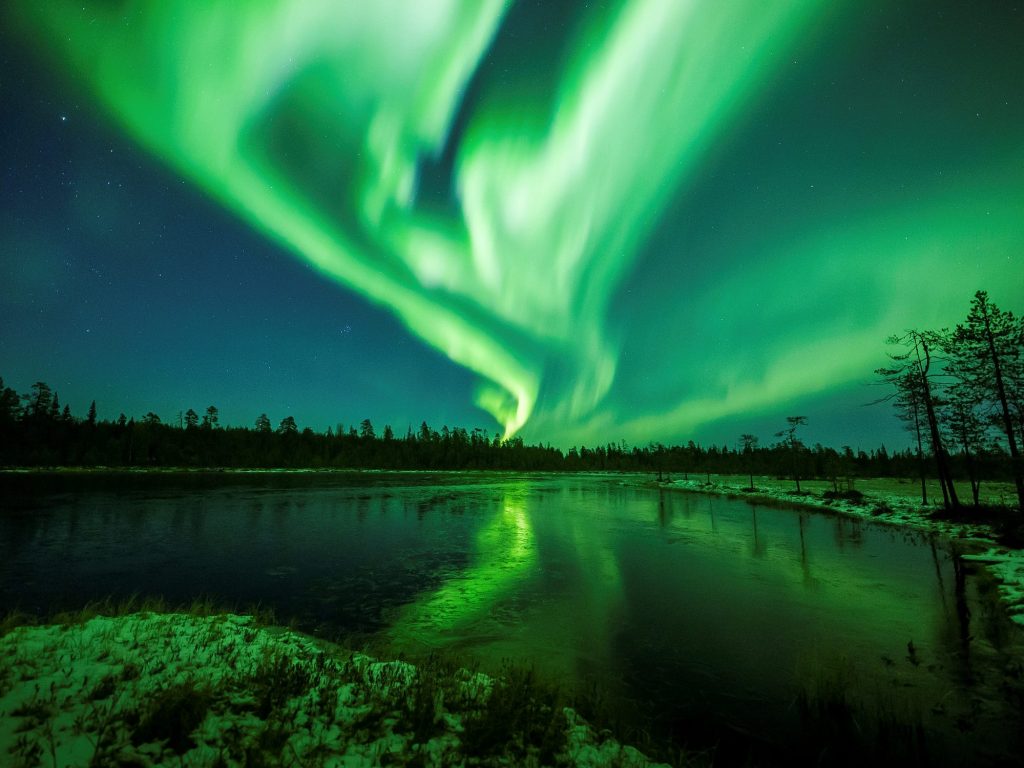- Eruptions of plasma from the sun are careening toward Earth and will likely cause a geomagnetic storm.
- That could bring the aurora borealis south to New York, Chicago, and Portland Wednesday night.
- Solar storms can be disruptive to radio, GPS, satellites, and other technology.
Eruptions of electrically charged plasma from the sun might push the aurora borealis all the way to New York, Chicago, and Portland, Oregon on Wednesday night.
The solar eruptions are called coronal mass ejections (CMEs). They're named for their origins in the corona, the outer layer of the sun's atmosphere, and a series of them are traveling toward Earth right now. They're all expected to arrive at about 1 a.m. ET on Thursday, possibly triggering stunning, highly active auroras as far south as Pennsylvania, Iowa, and Oregon, according to the Space Weather Prediction Center, a branch of the National Weather Service.
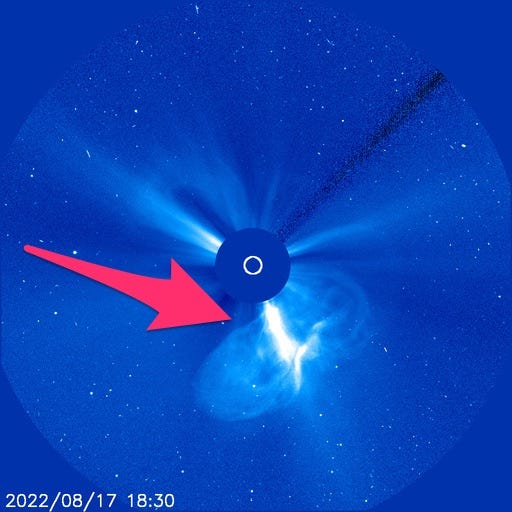
The aurora appears when Earth's magnetic field channels electrically charged solar particles toward the poles, where the particles interact with gases in Earth's atmosphere. That's what creates ribbons of bright colors.
When CMEs send floods of those particles towards the Earth, that causes a geomagnetic storm, which can produce particularly stunning auroras.
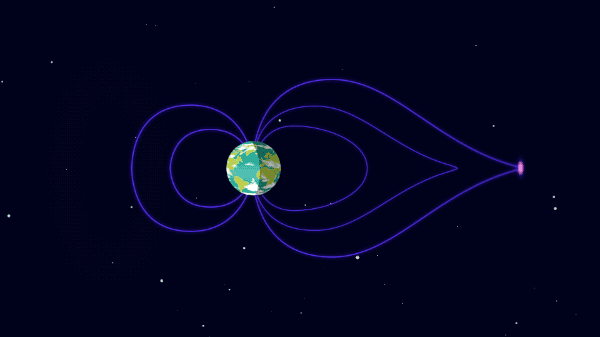
Geomagnetic storms can wreak havoc on power grids and satellites
Solar storms don't just bring pretty auroras. The inundation of solar particles can also interfere with power grids, GPS, and radio communications, and even affect satellites' orbits around Earth. Wednesday's storm isn't expected to have much impact on technology, but past solar storms have caused problems.
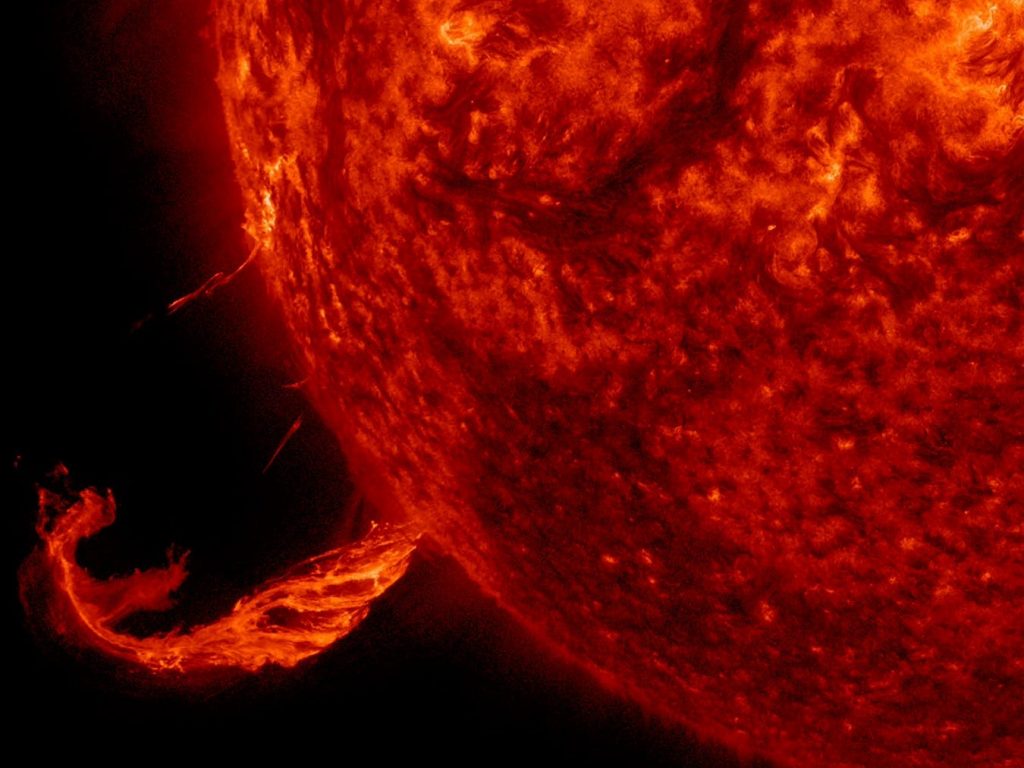
In 1989, an inundation of particles from the sun knocked out Quebec's power for about nine hours. Two other solar storms cut off emergency radio communications for a total of 11 hours shortly after Hurricane Irma in 2017. A solar storm may have even cut off SOS broadcasts from the Titanic as it sank on April 14, 1912, but that's not known for sure.
Bursts of solar activity can also endanger astronauts in Earth's orbit by interfering with their spacecraft or knocking out communications to mission control.

So studying the source of charged solar particles could help scientists figure out how to protect both astronauts and Earth's electric grid from these unpredictable electrical storms. Two spacecraft currently orbiting the sun are doing just that.
In February 2020, NASA and the European Space Agency launched the Solar Orbiter to capture data about eruptions on the sun's surface. NASA's Parker Solar Probe is also zooming around the sun. It's designed to measure solar eruptions as they happen, tracing the flow of material from the sun to the Earth in real-time.
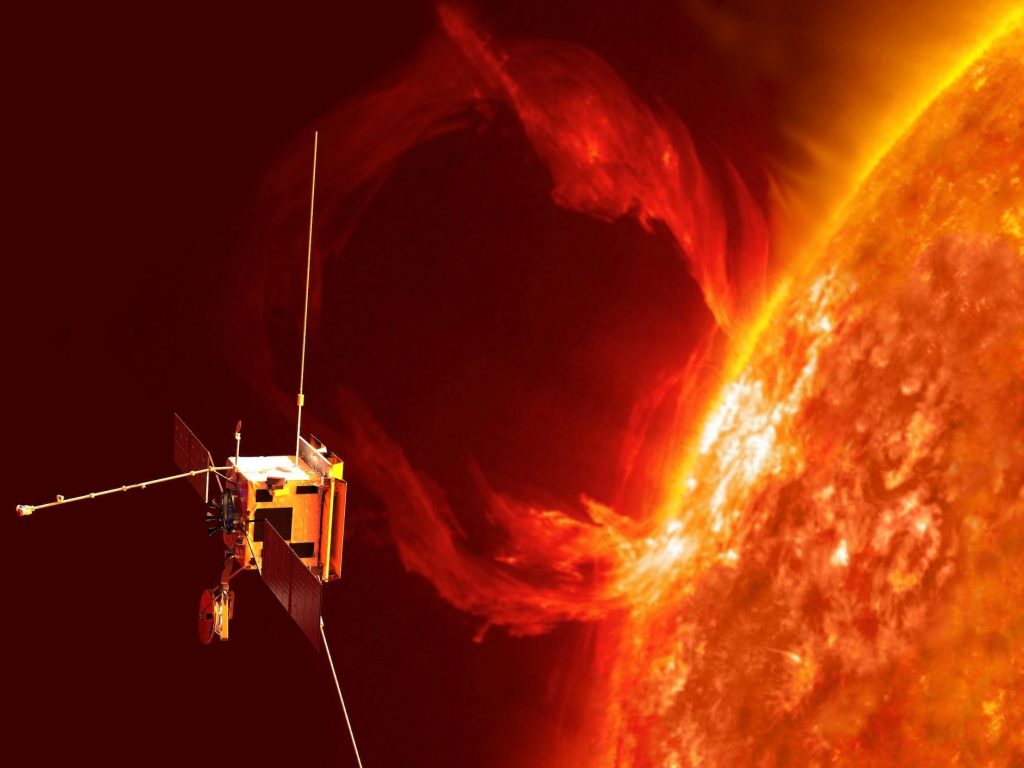
The information these spacecraft are collecting could one day help scientists forecast more geomagnetic storms before they happen.

